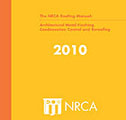Regardless of whether you call it the "swine flu" or "H1N1 virus," you must ensure your workplace is prepared to handle its economic and health consequences. The much-feared H1N1 virus not only poses a threat to the health of your employees and their loved ones, it also presents significant dangers for your business and challenges your ability to comply with various labor and employment laws.
Anticipated problems
Because the H1N1 virus is expected to keep waves of workers home, you may need to consider developing policies and procedures for ensuring absences are treated in accordance with the Family and Medical Leave Act, Americans with Disabilities Act, Fair Labor Standards Act and National Labor Relations Act (NLRA).
Perhaps more disconcerting is the possibility of sick employees coming to work and infecting co-workers. You should consider enacting policies to maintain a safe and healthy workplace consistent with Occupational Safety and Health Administration (OSHA) regulations while preventing liability under anti-discrimination laws and the NLRA.
For example, if you provide employees with masks because of an H1N1 outbreak in your workplace, you may be liable if the masks are later discovered to be ineffective against the virus, particularly if you misrepresented the masks' effectiveness.
When complying with OSHA regulations, you also should be careful not to run afoul of anti-discrimination laws. For example, do not terminate an employee or reduce an employee's hours because you think the employee has a particular characteristic or status that increases his or her likelihood of becoming infected with the H1N1 virus, assuming, of course, the particular characteristic or status is protected (such as race or national origin).
Similarly, you may be liable for unlawful discrimination if you make impermissible disability-related inquiries, require an employee to undergo a medical examination, or take a tangible employment action because of an employee's actual or perceived disability.
Recommendations
Consider the following when preparing your workplace for the H1N1 pandemic:
- Evaluate current policies and practices. Consider developing and implementing a communicable disease policy. The policy should, at a minimum, describe the disease-control practices to which your employees are expected to adhere, symptoms linked to the H1N1 virus, employees' obligation to stay home or leave work if they become infected, and employees' obligation to inform a designated company official if they become infected with (or are exposed to) the H1N1 virus.
- Implement disease-control practices. Educate your employees about good hygiene, and revisit your cleaning practices to ensure surfaces and items that are frequently touched are cleaned routinely. In addition, implement methods that reduce the length of time employees are in close contact with each other.
- Open communication. Consider conducting training and disseminating information that describe your company's disease-control practices. Similarly, train human resources personnel and other management-level employees to adequately implement the policies.
You cannot afford to wait for the H1N1 pandemic to hit your workplace before taking action. You may want to consult legal counsel to develop and implement an appropriate strategy for addressing the H1N1 pandemic.
Jason C. Kim is a partner and Gray I. Mateo-Harris is an associate with the Chicago-based law firm Neal, Gerber & Eisenberg LLP's Labor and Employment group.



